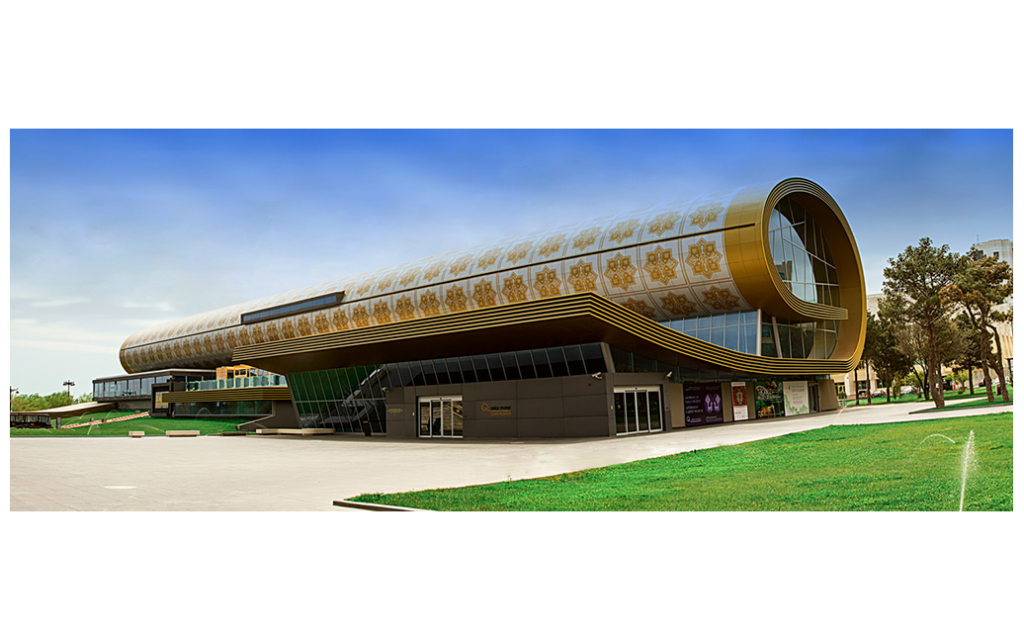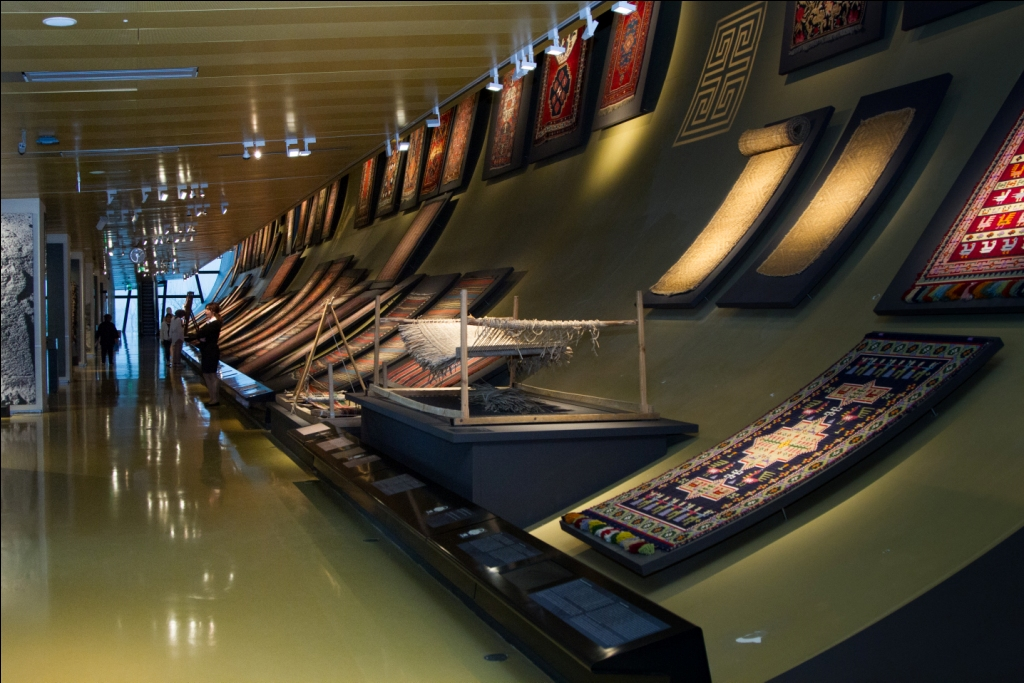
National Carpet Museum of Azerbaijan
entrance
On March 13, 1967, the National Carpet Museum of Azerbaijan was established by Decree No. 130 of the Cabinet of Ministers of the Azerbaijan SSR, and the museum was called the Azerbaijan State Museum of Carpets and Folk Applied Arts from 1967 to 1993, then the State Museum of Carpets and Applied Arts was called "Latif Karimov" from 1993 to 2014, then it was named the Carpet Museum in Azerbaijan from 2014 to 2019, and finally it became the museum's name; The National Carpet Museum of Azerbaijan from 2019 to now.

History of the Carpet Museum of Azerbaijan
The Carpet Museum in Azerbaijan is the only museum specialized in the art of carpet weaving since the time of its foundation, with the purpose of storing, searching for / displaying unique examples of carpet weaving arts, as a national heritage in Azerbaijan. Nice Karimov.
The first start
On April 26, 1972, the first permanent exhibition was held in the building of the Friday Mosque, an architectural landmark of the nineteenth century located in Ichishir (an ancient historical district of Baku), Heydar Aliyev, the national leader of Azerbaijan, participated in the opening ceremony, and Aliyev was among those who supported Great for establishing the museum since the first day in the seventies and eighties of the last century, and thanks to the continuous assistance of President Heydar Aliyev, the museum was able to acquire crafts and renew its collection periodically, and during those years the museum was able to acquire the finest art of Azerbaijani carpet weaving.
Impact of the 1991 crash
After that, the State Museum of Carpets and Applied Arts was transferred to the center of the former Lenin Museum, located on Nvshiler Street in 1992, when the building was handed over to the Ministry of Culture in the Republic of Azerbaijan after the collapse of the Soviet Union in 1991, and it was annexed to the Museums Center, and the museum exhibition was held, which represents carpet samples. from different regions of Azerbaijan, as well as works of other types of applied arts, in 13 spacious rooms on the second floor.
The new building of the museum
In 2007, Aliyev, President of the Republic of Azerbaijan, signed a decree to construct a new building for the museum on the lands of the Coastal National Park as part of a joint project between the Ministry of Culture and Tourism, the Heydar Aliyev Foundation and UNESCO in the Republic of Azerbaijan, under the supervision of the Austrian architect Franz Jans, and in 2014 the museum building, which was completed Meeting all modern requirements, the museum has been constantly developing into one of the main centers of samples of Azerbaijani national culture over time.
Many directors ran the Carpet Museum in Azerbaijan over 50 years, from 1967 to 1982, it was led by the artist Aziz Aliyev, and from 1982 to January 5, 2016 it was managed by Professor Roya Tagiyeva, who holds a doctorate in arts, and the museum has been headed since March 2, 2016 Sherin Milikova , a cultural employee with honorary honors.

Museum developments
The performance of the museum later developed into a research, training, cultural and educational center, in which cultural events such as seminars, international exhibitions and conferences are organized. The museum has organized more than 30 exhibitions in different countries around the world during its 50 years of existence, at the initiative of President Heydar Aliyev and UNESCO. The International Symposium on Oriental Carpet Art was held in 1983 at the National Carpet Museum in Azerbaijan, then other international symposiums were held such as the Art of Azerbaijani Carpet Weaving in 1988, the Symposium on Azerbaijani Carpets and Applied Arts in 2003, and the Symposium on Traditions and Innovations in 2017 with the participation of the National Carpet Museum in Azerbaijan, in addition to In addition, a symposium dedicated to the centenary of Latif Karimov was held at the UNESCO headquarters in Paris in 2007.
The role of the museum globally in highlighting the Azerbaijani carpets
The Museum cooperates closely with influential international organizations, such as the European Textile Network (ETN), the European Museum Forum (EMF), the International Council of Museums (ICOM), UNESCO and the Human Cooperation Council of the Commonwealth of Independent States (IFESCO).
legal protection
The Law on the Preservation and Development of Azerbaijani Carpets was prepared and adopted by the Museum in 2004. The main objective of the law was to register Azerbaijani carpets, their protection and development, and to integrate scientific and methodological training.
openness to the world
Traditional Azerbaijani carpets were inscribed on the UNESCO Representative List of Intangible Cultural Heritage in 2000 at the initiative of the First Vice President of Azerbaijan Mehriban Aliyeva, Chairman of the Heydar Aliyev Foundation, Member of the Milli Majlis (National Parliament of the Republic of Azerbaijan), and Goodwill Ambassador of UNESCO and ISESCO (Islamic World Organization for Education and Science). and culture).
government estimate
In accordance with the Decree of the Cabinet of Ministers of the Republic of Azerbaijan dated July 15, 2019, the Azerbaijan Carpet Museum has been awarded national status for its significant contribution to the dissemination and promotion of the art of Azerbaijani carpet weaving.
Museum headquarters
Housed in one of the most modern buildings in the country, the Azerbaijan Carpet Museum not only stores a rich collection of artifacts and carpets (the most valuable heritage of the Azerbaijani nation), but also serves as a center for the comprehensive research of traditional carpet-weaving art and its dissemination in world culture.
Translated by: azcarpetmuseum.az
Share

































